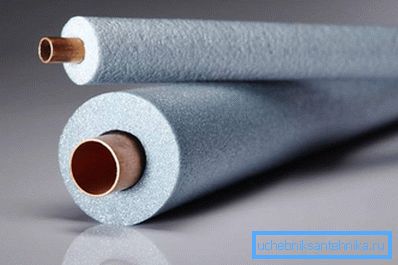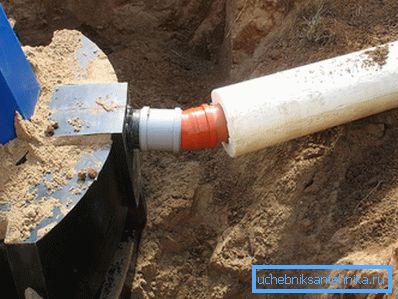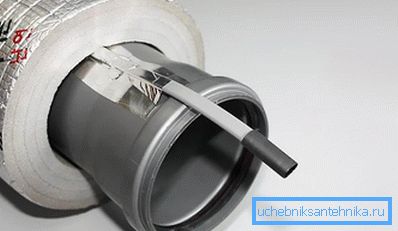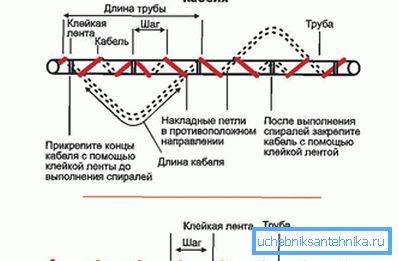How to insulate sewer pipes in a private house
Building a sewage system is one of the important stages in home improvement. Proper planning and laying of pipes, the construction of a sump or septic tank - all this should be given special attention. But also do not forget about the insulation of pipes laid in the ground. This will help to avoid many troubles during operation. About how to insulate sewer pipes in a private house, and will be discussed in this article.
Is it necessary to carry out insulation
Some experts say that you should not insulate sewer pipes. But such a statement can be true only if certain rules are observed during installation:
- Laying pipes below ground freezing. In this case, the frost will not be able to get to them.

- Observance of the correct bias. If drains that are at room temperature run off without delay, they will not have time to freeze.
- No blockages. Stagnant water quickly freezes. If there are no blockages in the sewer pipes, there will be nothing to freeze.
Especially often the problem of freezing becomes relevant in the northern regions of the country and in areas located in the depths of the continent. There are frequent severe frosts.
Tip! It is necessary to carry out warming necessarily if the family of 2-4 people lives in the house. In this case, the drains will be small and the pipes may freeze.
How to warm the sewer
If it was decided to heat the sewer pipes, then it is worth choosing the appropriate method. For thermal insulation can be used special materials or heating cable. Consider both ways.
The following materials are used for thermal insulation of sewage pipes:
- mineral wool;
- Styrofoam;
- polyethylene foam;
- polyurethane foam;
- polystyrene foam.

Mineral wool is a fairly widespread insulating material. Its popularity is due to its low price and ease, ease of installation. A layer of cotton wool is wrapped tightly around the pipe. At the same time it is necessary to achieve coverage of the entire surface without gaps.
Tip! Mineral wool has significant drawbacks. Firstly, such a layer of heat insulator needs protection from moisture. It is necessary to mount a layer of polyethylene or foil over cotton wool. Secondly, mineral wool does not tolerate mechanical impact. As a result, in some places the material is crumpled and the protection deteriorates.
It is considered more suitable foam. On sale you can find special designs of this material in the form of a shell. It is put on the pipe and closes all the space. Polyfoam is inexpensive, it is light and there are no problems with installation. In addition, the material is not afraid of moisture and not so much loses its shape during mechanical stress. The flammability of some grades of foam plastic can be considered a disadvantage; therefore, it is necessary to use it indoors with caution.

More modern material is foamed polyethylene. He, like foam, is produced in the form of a shell, which is easily worn on the pipe. Polyethylene foam will last more than 25 years, and it will not lose its shape and insulating qualities. In addition, the material does not rot, is not afraid of moisture and easily tolerates temperature extremes. But polyethylene foam is more expensive than foam or mineral wool.

Polyurethane foam and polystyrene foam are also available in the form of shells or hollow cylinders. These materials are durable, not afraid of moisture and do not rot.

For insulation of sewer pipes, heating cables are sometimes used. The cable must be laid either inside the pipe or wound outside around it. In the second case, use a special cable channel. This method of insulation is very effective, ice in such pipes is not exactly formed. But the use of electric heating cable has several disadvantages. Namely:
- This method is very expensive. In addition to the purchase of the cable itself, you need to bear the cost of its installation, insulation and payment of electricity.
- Dependence on electricity. If you turn off the light, then the cable will not heat.

That is why this method is rarely used. Very often, with the help of a heating cable, separate areas are insulated. For example, a place where a sewer pipe emerges from a house, if the depth is sufficiently small. It is more convenient to use heat-insulating materials for insulating sewer pipes. First, the purchase of insulation materials will not hit so hard on the pocket. Secondly, if you do everything right, without the formation of cold bridges, and even put the pipes below the freezing level, you can not be afraid of freezing. Thirdly, it is an autonomous insulation, which does not depend on the availability of electricity.